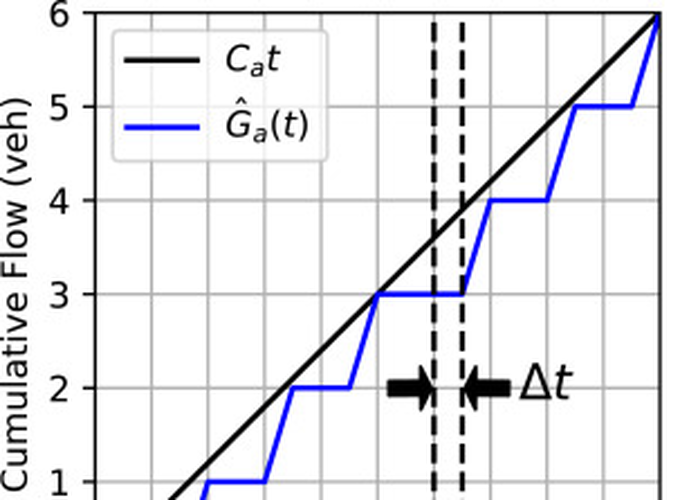 Figure featured in the article with DOI above
Figure featured in the article with DOI above
 Figure featured in the article with DOI above
Figure featured in the article with DOI above
Macroscopic traffic flow is a common choice for large-scale traffic simulations. These models do not provide individual-specific metrics as outputs. However, this treatment is necessary in agent-based-models, as in, for example, assigning routes based on personal characteristics. In this paper, we propose an extension of the link-transmission-model, an efficient and yet accurate discretization of the Lighthill–Whitham–Richards (LWR) model, which allow vehicles to be tracked individually while keeping the main features of the underlying model. The extension comprises modifying the link and node models to ensure that the flow between links is always at discrete levels. Therefore, every unit of flow is associated with one individual vehicle moving from its current to its next link. An upper bound of the discretization error is provided. We show that the proposed model resembles its continuous counterpart on lane drop, merge, and diverge cases. In addition, we apply the model into three different networks to validate its applicability in large networks. Finally, we also confirm the parameter transferability between continuous and discrete models and that both can well reproduce field data.